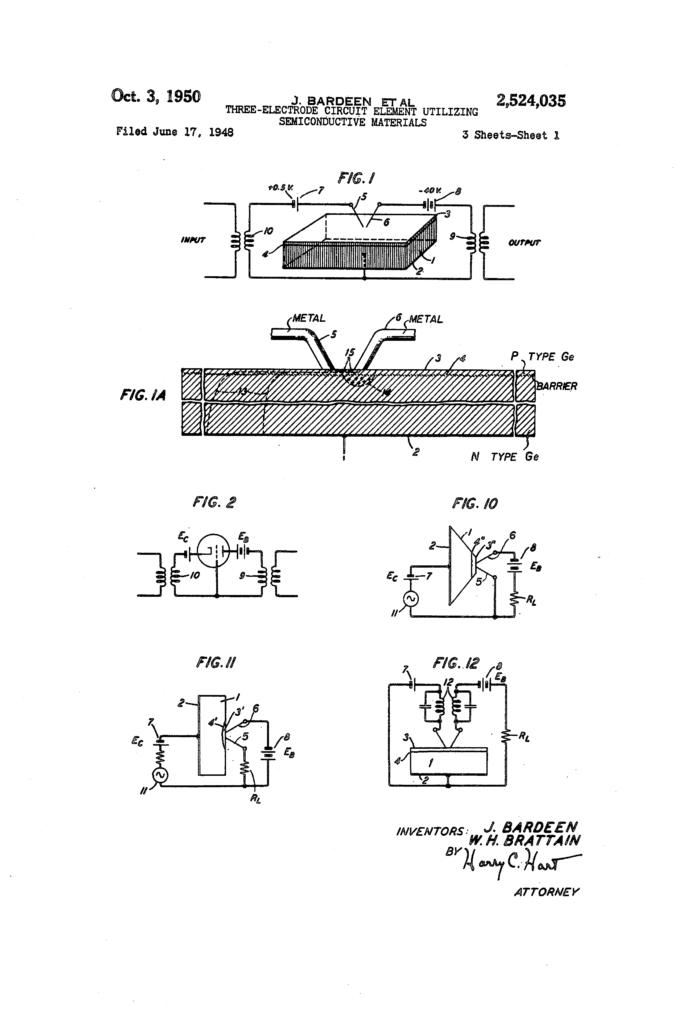On October 3, 1950, U.S. Patent No. 2,524,035 issued to J. Bardeen and W.H. Brattain on a Three Electrode Circuit Element Utilizing Semiconductive Material –the transistor:
Their invention ushered in the electronics age starting with simple transistor radios but leading to the microchip and modern computer technology.
The transistor was the work of not just Bardeen and Brattain, but also Willam Shockley (who was left off of the patent for strategic reasons). The trio received the 1956 Nobel prize for physics for their work in transistors. Shockley described the workings of the team as a “mixture of cooperation and competition.” Shockley eventually alienated Bardeen and Brattain, blocking the two from further work on transistors. Bardeen began working on superconductivity for which he won a second Nobel prize. Brattain refused to work with Shockley further and was pursued other interests, before leaving for academia. Shockley continued to improve transistors, developing a more robust layered structure that evolved into the modern bipolar junction transistor.

